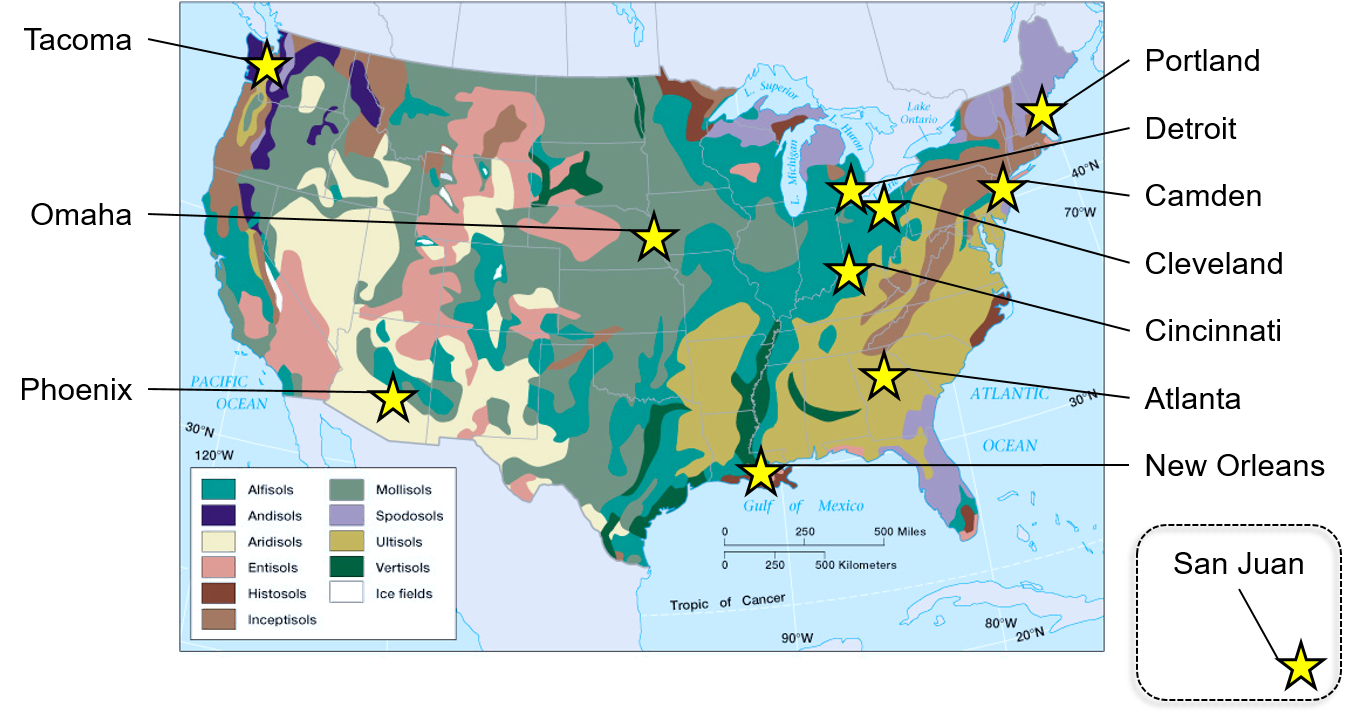Urban Soils, Ecosystem Services, and the Application of Green Infrastructure Practices
Importance of Urban Soils
We depend on urban soils to serve many roles in our cities and towns. This has become increasingly the case as communities seek to take advantage of ecosystem services (i.e., services to humans) by managing urban green spaces for multiple functions. These functions include stormwater management, mitigation of urban heat island impacts, recreational spaces, and even habitat for the conservation of plants and animals.
Some urban areas are experiencing a significant increase in the number of vacant properties. In an effort to revitalize these areas, some communities are converting them into green spaces, such as parks, green infrastructure practices (e.g., rain gardens, permeable pavement), and to support urban agriculture. However, the poor condition of the soils on these properties can sometimes be an obstacle to adding these spaces.
New parks and other green spaces, and even well-established ones, can benefit from an improved knowledge of the soils that support them. This knowledge will allow for better management decisions so that citizens can take advantage of local ecosystem services.
Urban Soil Surveys
EPA has developed a soil survey assessment protocol to identify the urban imprint on the major soil orders in the United States, including Puerto Rico. This research supports efforts by states, communities, and municipalities to uncover and leverage the potential for urban soils to support good land management practices, including where to best apply green infrastructure practices for stormwater management. For the assessment, EPA scientists made measurements and examined soil characteristics, including the following:
- Hydrology, which measures the ability of the soils to infiltrate water, and how these urban soils drain in the subsurface.
- Taxonomy and pedology, which offer clues to the local historic hydrologic condition, based on soil layering, color, and other characteristics (e.g., texture, rock content, etc.) of urban soils.
This ongoing research supports efforts by states, communities, and municipalities to uncover and leverage the potential for urban soils to support good land management practices, including where to best apply green infrastructure practices for stormwater management, and render other ecosystem services.
Publications
- Vacant urban lot soils and their potential to support ecosystem services
- Evaluation of urban soils: suitability for green infrastructure or urban agriculture
- Residential demolition and its impact on vacant lot hydrology: implications for the management of stormwater and sewer system overflows
- Soils investigation for infiltration-based green infrastructure for sewershed management (Omaha, NE)
- Green residential demolitions: case study of vacant land reuse in stormwater management in Cleveland
Related Resources
- Factors contributing to the hydrologic effectiveness of a rain garden network (Cincinnati OH USA)
- Hydropedological assessments of parcel-level infiltration in an arid urban ecosystem
- Adaptive governance to promote ecosystem services in urban green spaces
- Adaptive exchange of capitals in urban water resources management: an approach to sustainability?
- A tale of two rain gardens: barriers and bridges to adaptive management of urban stormwater in Cleveland, Ohio
- Ecology for the shrinking city
- Sustainability for shrinking cities
- Situating green infrastructure in context: a framework for adaptive socio-hydrology in cities

